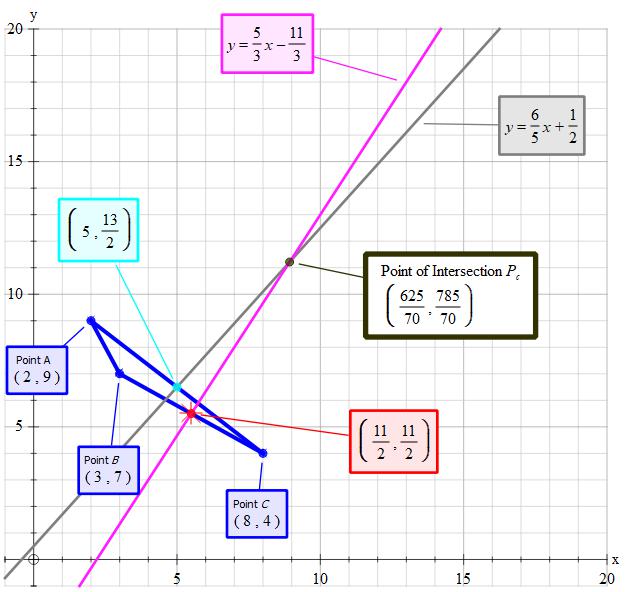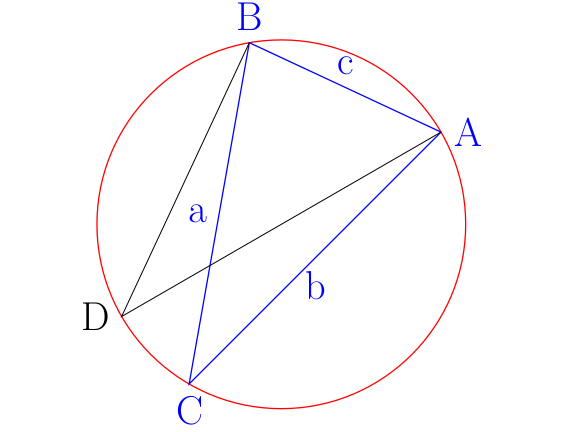A triangle has corners at #(3 ,7 )#, #(2 ,9 )#, and #(8 ,4 )#. What is the area of the triangle's circumscribed circle?
2 Answers
area
Explanation:

Set point 1 as
Set point 2 as
Set point 3 as
The perpendicular from
(circumcentre).
Set mid point as
Set gradient
Perpendicular gradient
So we have
~~~~~~~~~~~~~~~~~~~~~~~~~~~~~~~~~~~~~~~~~~~~
Set gradient
Perpendicular gradient
So we have
~~~~~~~~~~~~~~~~~~~~~~~~~~~~~~~~~~~~
Using simultaneous equations for
the centre of the circle is at:
From this we can derive the radius and hence the area of the circle.
~~~~~~~~~~~~~~~~~~~~~~~~~~~~~~~~~~~~
Using Pythagoras on the two points
Let the radius be
area
area
Explanation:
If you just need the area of the circumscribed circle, the amount of calculations can be reduced a bit by appealing to a simple consequence of the sine law of triangles.
We usually express this law in the form
what is often not mentioned is that this common value is, actually the diameter

Here ABC is a triangle whose circumscribed circle is drawn in red. AD is a diameter of the circle. Then
Armed with this result, we first calculate the lengths of the three sides of the given triangle. Let us label the vertices
We also need one of the angles, say
With our numbers, we have
Finally
So, the area of the circumscribed circle is


